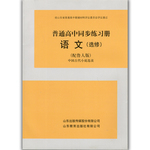题目内容
【题目】What you have done is __________ the doctor's orders.
A. attached to B. resistant to C. responsible to D. contrary to
【答案】D
【解析】 句意:你所做的与医生的要求相反。(be) contrary to. . . 意为“与……相反”。

练习册系列答案
 海淀黄冈名师导航系列答案
海淀黄冈名师导航系列答案 普通高中同步练习册系列答案
普通高中同步练习册系列答案
相关题目
题目内容
【题目】What you have done is __________ the doctor's orders.
A. attached to B. resistant to C. responsible to D. contrary to
【答案】D
【解析】 句意:你所做的与医生的要求相反。(be) contrary to. . . 意为“与……相反”。

 海淀黄冈名师导航系列答案
海淀黄冈名师导航系列答案 普通高中同步练习册系列答案
普通高中同步练习册系列答案